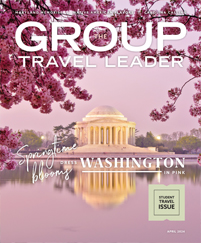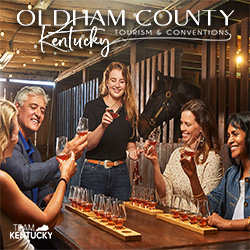Guadalupe-Nipomo Dunes National Wildlife Refuge
Passing out of the Big Sur area, Highway 1 turns through the valleys of San Luis Obispo before continuing south to Santa Barbara via Pismo Beach. The Guadalupe-Nipomo Dunes, a national natural landmark along the shore just south of Pismo Beach, offers visiting groups a chance to experience an ecosystem they’d typically associate more with North Africa or the Middle East: rolling sand dunes large enough that they look like they could swallow a car.
Lindsey Whitaker, who organizes the education and tour programs for the Dunes Center, can create a custom tour around group interests but recommends an overview tour that begins at the freshwater lake that is a prime birding area, particularly in the spring when the baby birds come out. The area is a protected nesting ground for the endangered California least tern and the threatened western snowy plover.
The two-hour route travels exclusively over boardwalks as docents introduce both the natural and the human history of the singular ecosystem, which famously hosted a semisecret, anti-establishment community known as Dunites that occupied the dunes from the 1920s through 1970s.
Though desert climates and southern California generally are known for hot, dry weather, the wind can affect the dunes very quickly, even bringing in fog off the ocean, so Whitaker advises groups to bring jackets.
Santa Barbara Wine Country
Many groups of wine lovers traveling near Santa Barbara visit the Santa Ynez wine valley, an inland area popularized by the movie “Sideways.” For those taking in the PCH, which winds through the westernmost portion of Santa Barbara wine country, smaller, family-run wineries have maintained their slow southern California style.
Though grapes first came to the area with missionaries in the late 18th century, Santa Barbara is a relatively new wine area as far as California wines are concerned. It now contains four American viticultural areas, with two more undergoing official certification.
“There are quite a few wineries along PCH that offer public tours, though some are by appointment online, so you need to talk to the winery to set it up,” said Taylor Hart, marketing and communications coordinator for Santa Barbara Vintners’ Association. “Sanford Winery, close to the PCH, is one of the more historic wineries in the area, and they do private tours and tastings for groups of 13 or more.”
Hart recommends the “wine ghetto,” just off the PCH in Lompok, a slightly industrial-looking area chock full of restaurants and nearly 15 wineries within walking distance of one another that have processing facilities with tasting rooms in front.
Bolsa Chica Ecological Reserve
As it heads south from Santa Barbara, the PCH enters a number of urban areas, including Santa Monica, Long Beach and Huntington Beach, but nature still prevails, even amidst the country’s quintessential example of urban sprawl.
Situated on a long barrier outcropping outside Huntington Beach, the Bolsa Chica wetlands show groups a very different side of the California coast than the dunes and fertile viticultural lands they just passed. Five miles of trails snake through a salt-water marsh and estuary, where the wildlife changes with the season due to migratory patterns but often includes snakes, ducks and wetland sparrows.
According to program associate Max Klasky, who organizes guided tours and field activities, the custom one-and-a-half to two-hour tours focus on educating groups on the importance of wetlands in restoring groundwater and providing a rich site for migrating animals to pause on their journeys.










